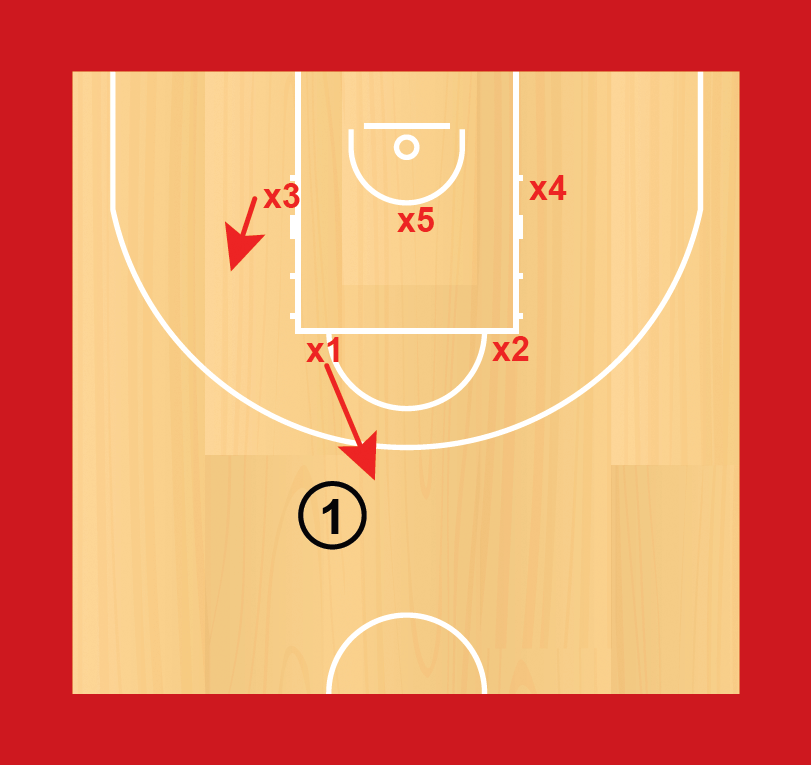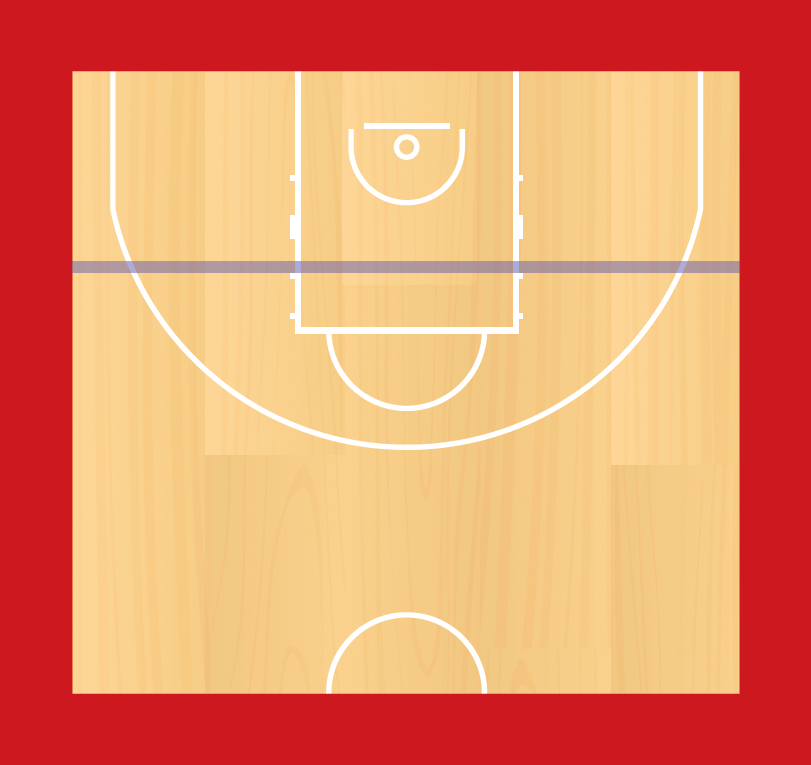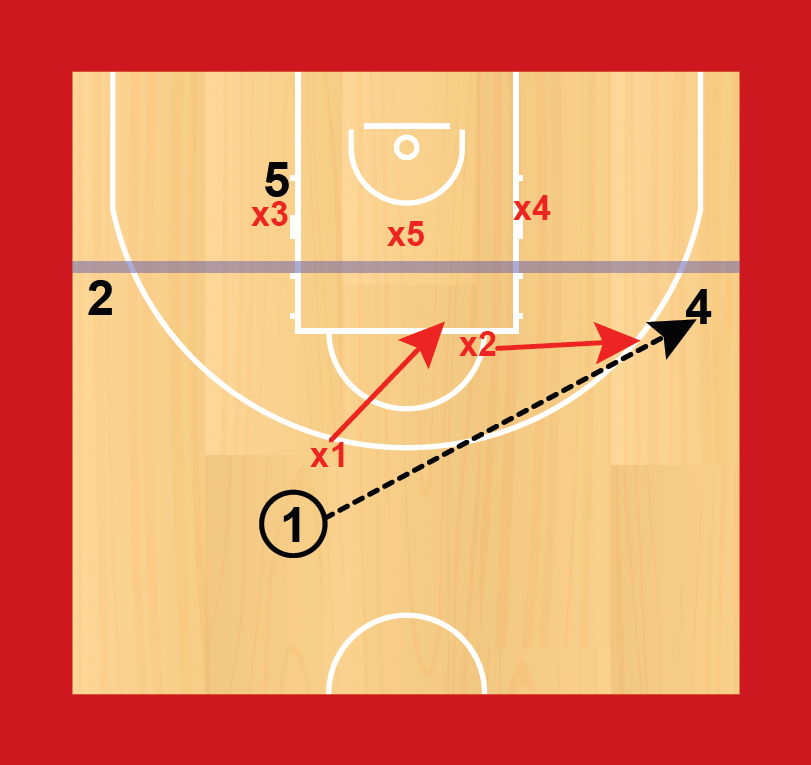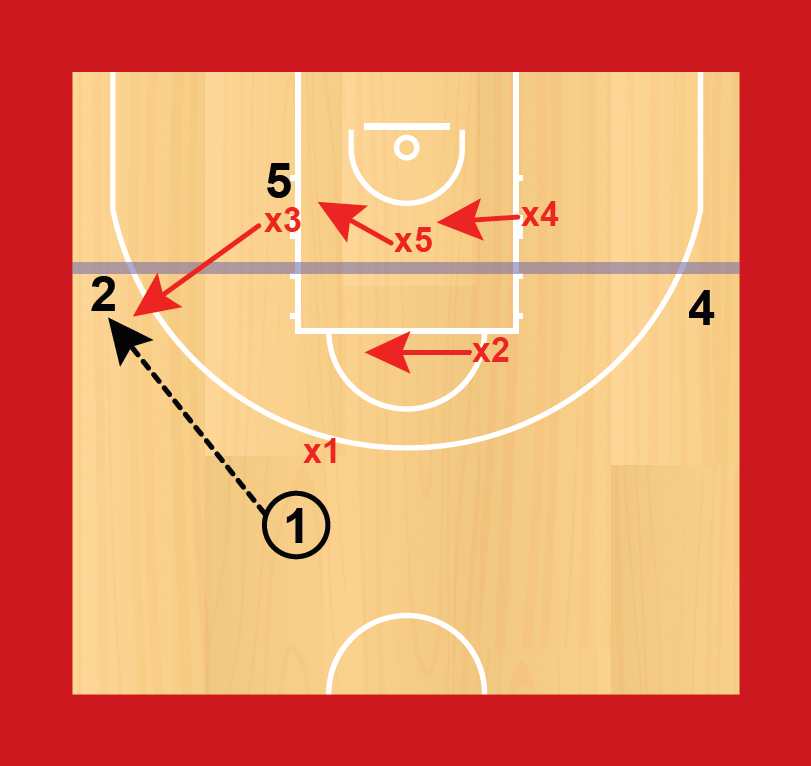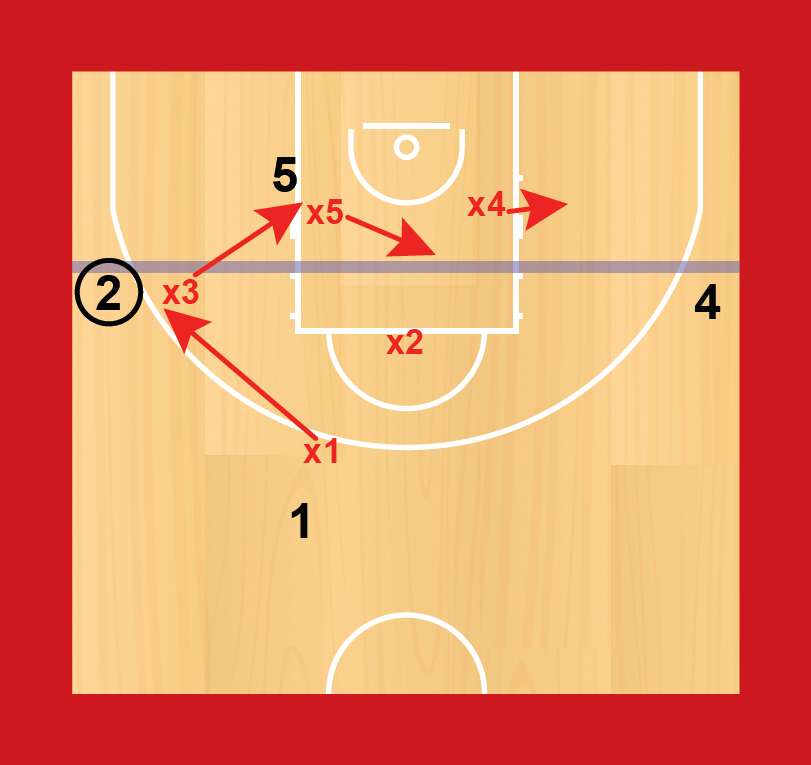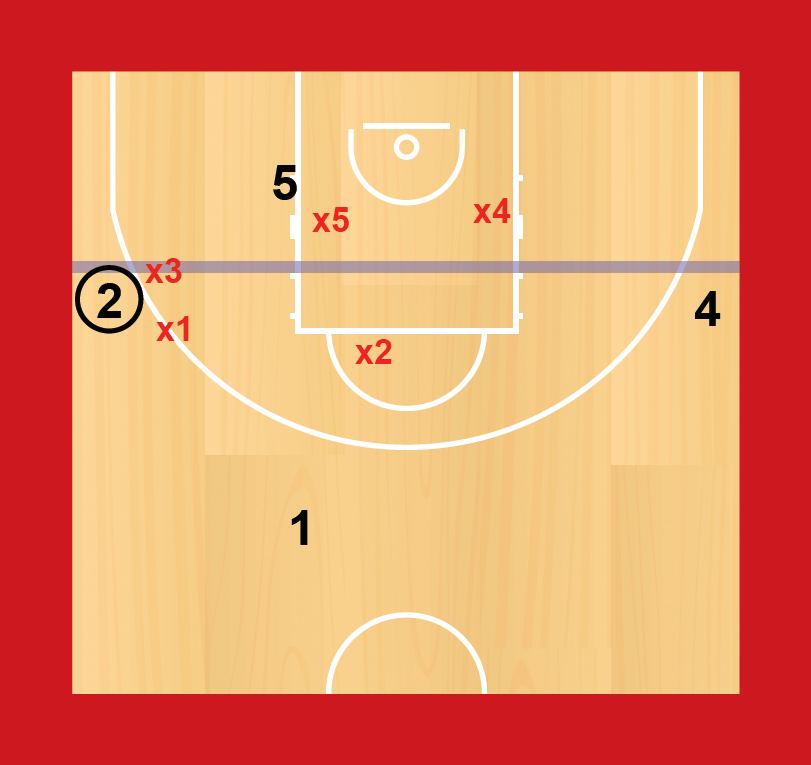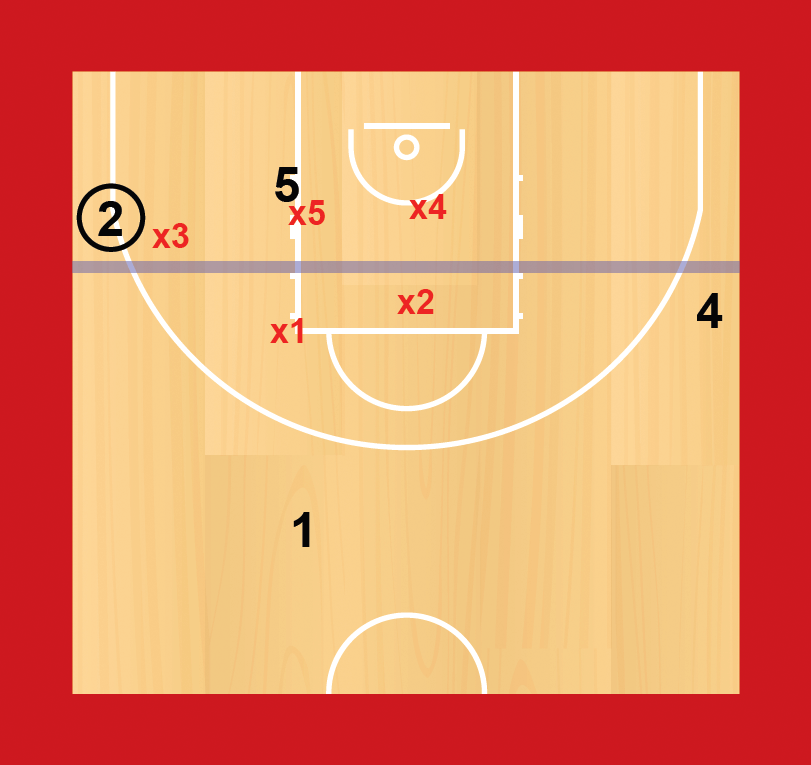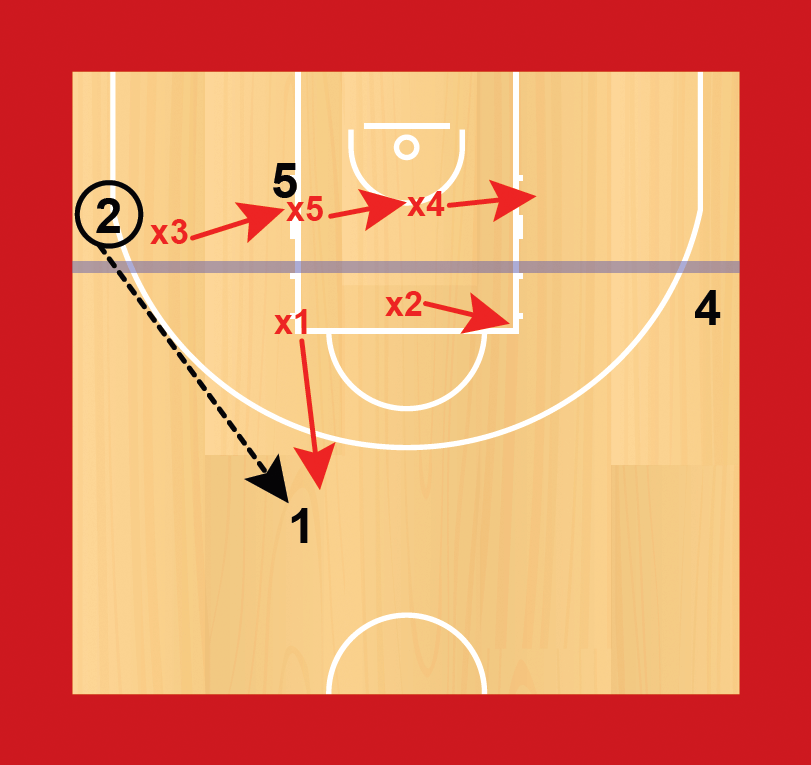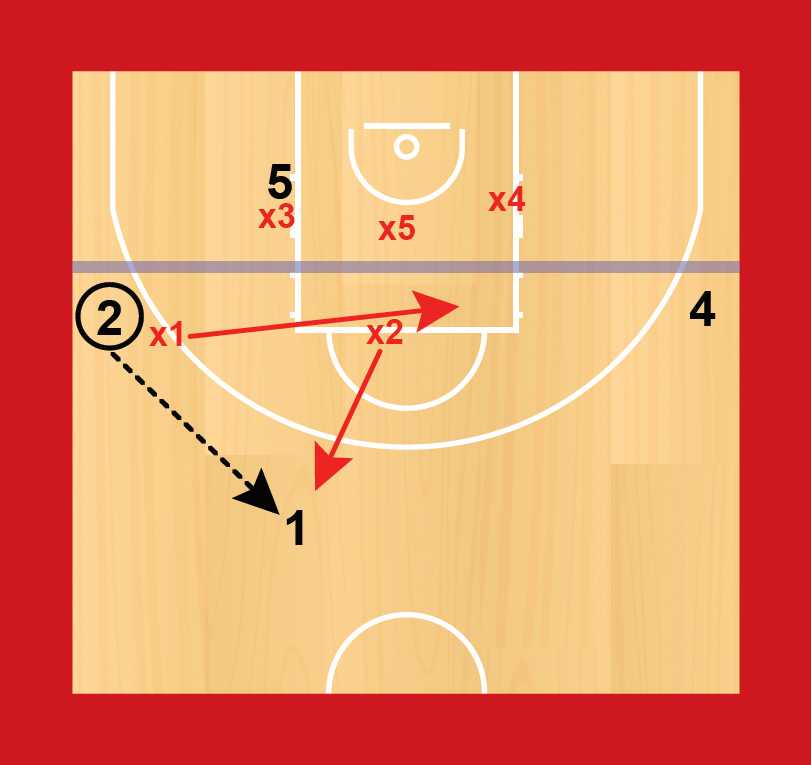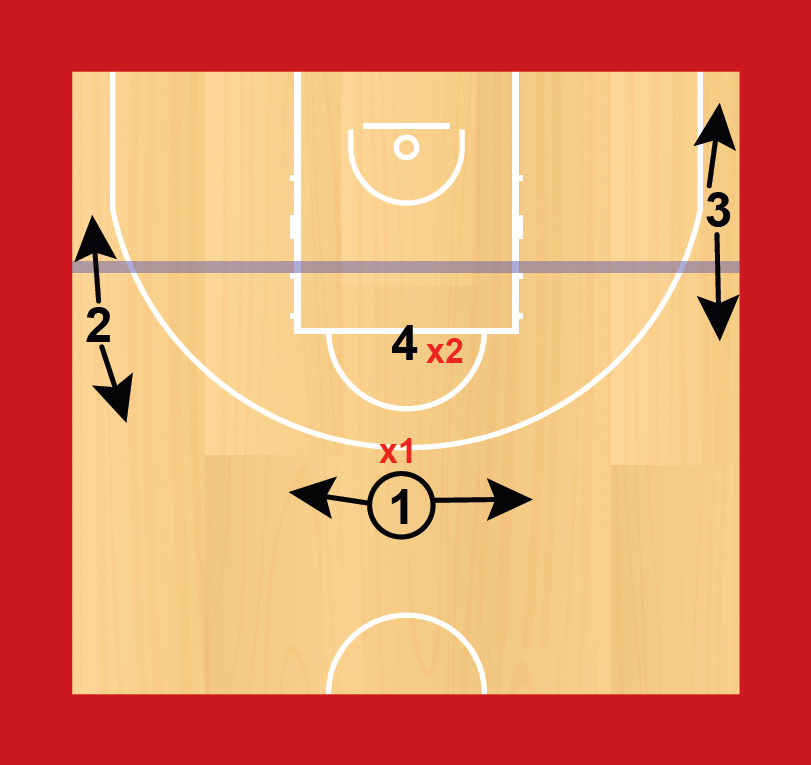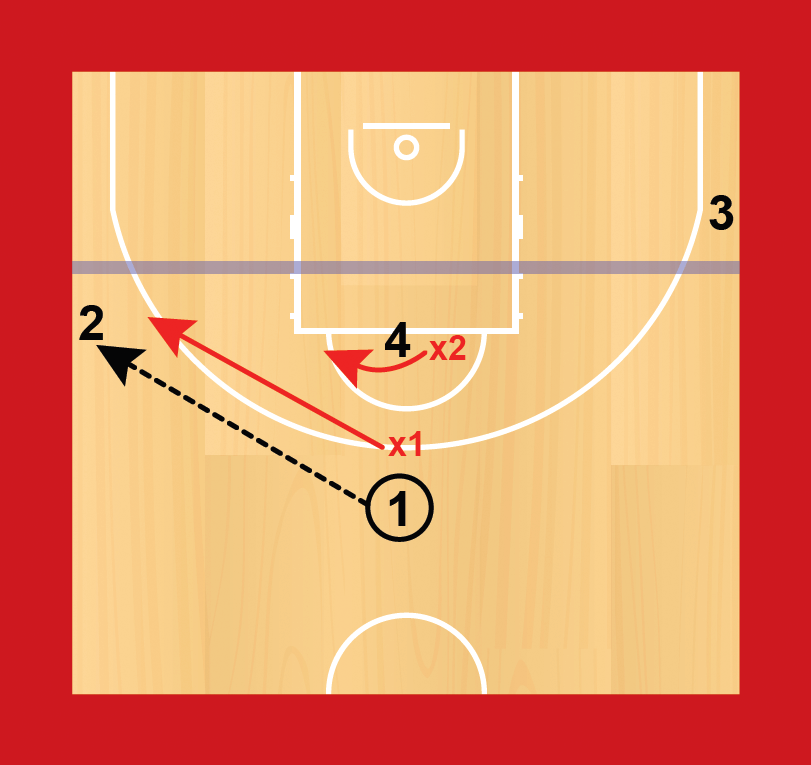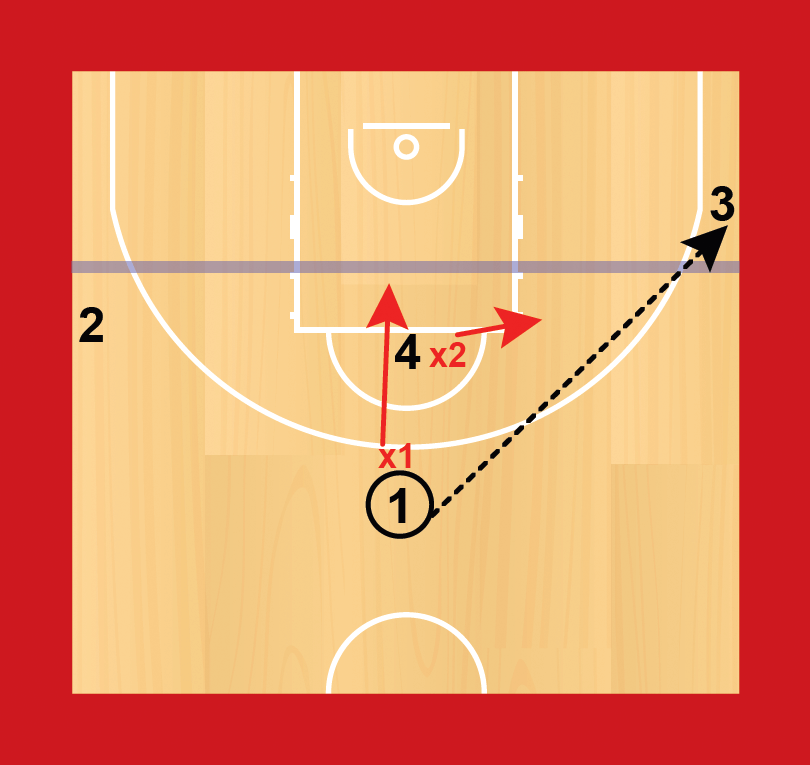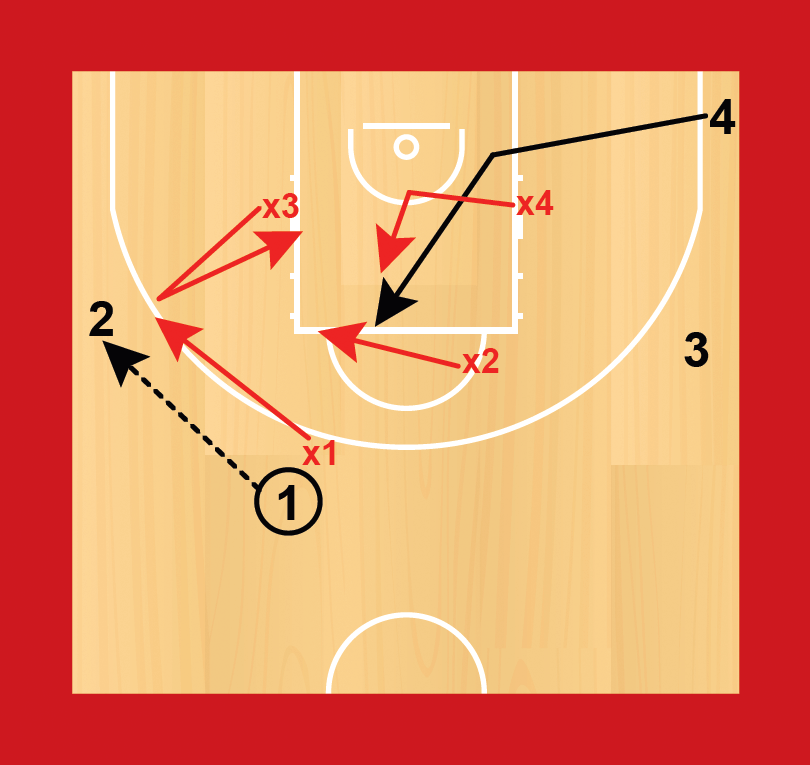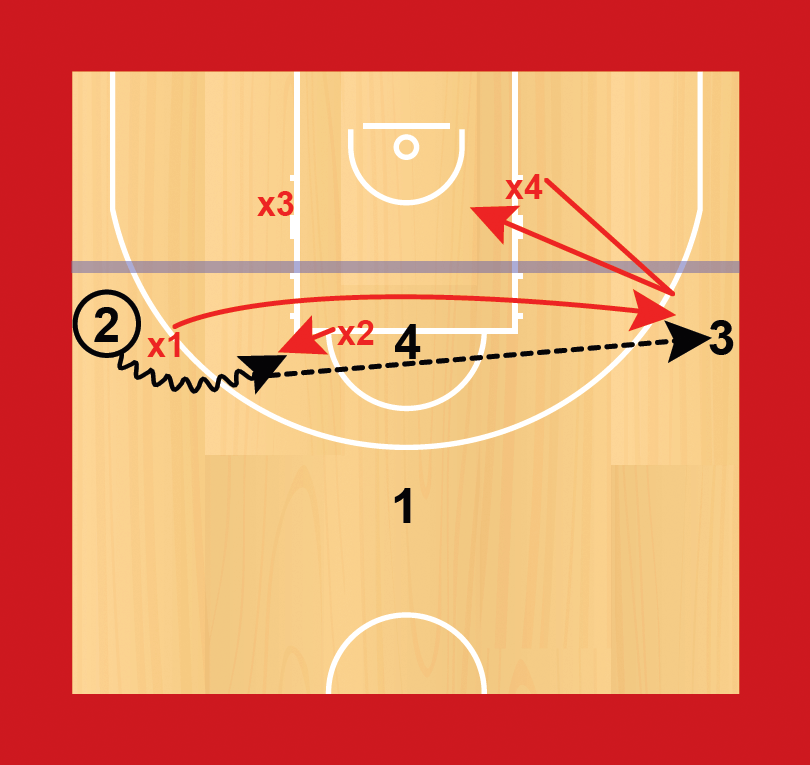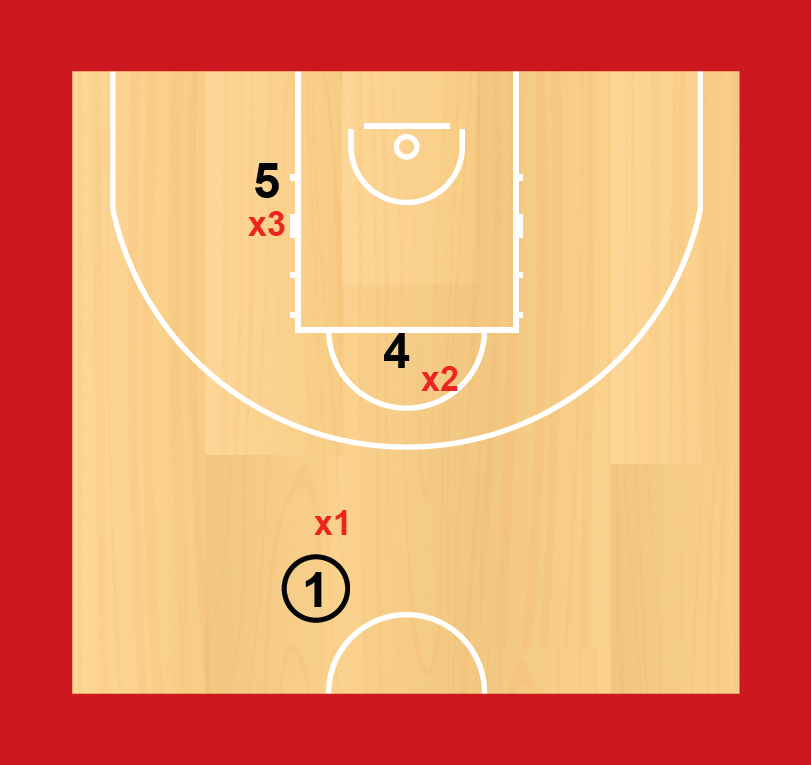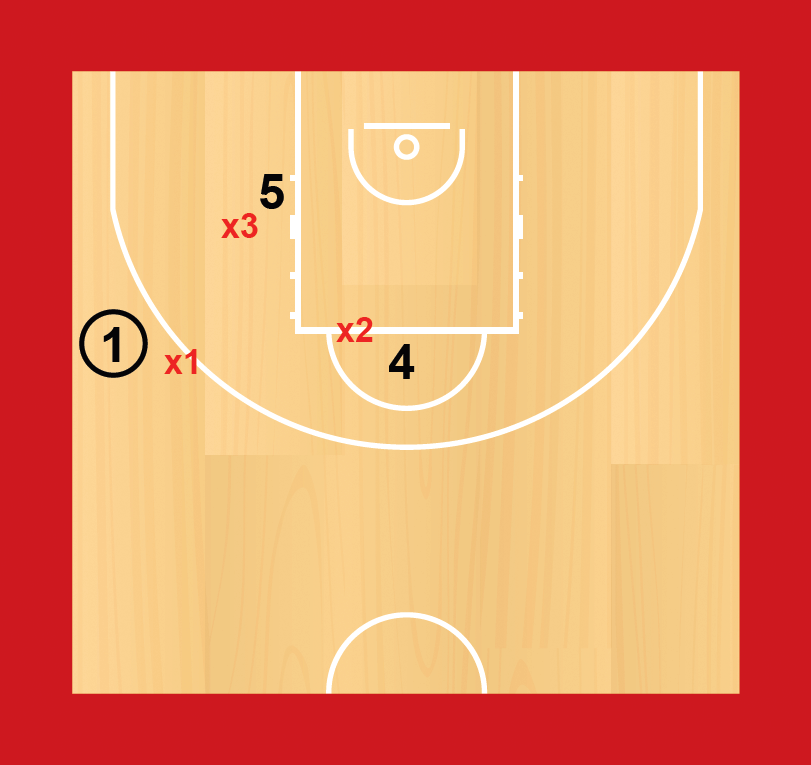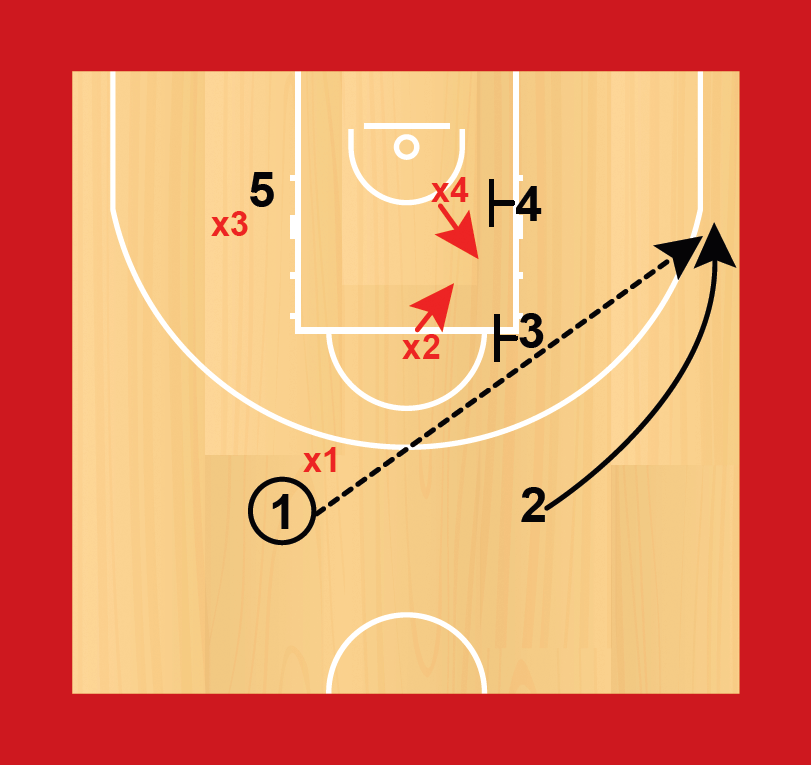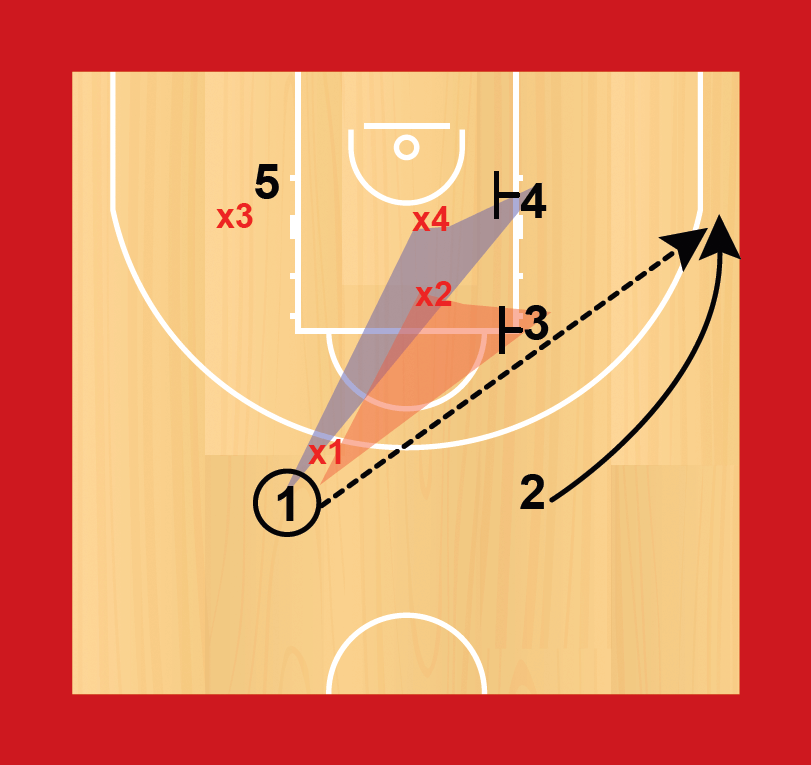Level 2
1.3.3 Half court zone defence
There are a number of alignments that can be used in zone defence, however, it is recommended that players are initially taught a 2-1-2 or 2-3 alignment. The reasons for preferring these alignments are:
1. They are very simple and players can learn the basic movements (“zone slides”) quickly;
2. They have the same structure (four outside players) as is recommended for developing “man to man” defence, and is also used in teaching “motion offence”;
3. They are the most common alignments used by teams.
Key Points
When zone defence is introduced, players must understand that playing according to this strategy does not mean making less effort or having less individual responsibility. Unfortunately, many teams are poorly instructed in zone defence which results in less effort from team members.
The role of the coach is to teach the basic movements (“slides”) of the zone and to clearly point out the specific responsibilities for each position within the zone defence. Each player should understand the principles for each position.
In whatever zone defence a coach wants to use, the coach must clearly point out:
- Who defends the player with the ball (and what are the movements of defenders on each pass);
- Who is responsible to stop penetration by the dribbler;
- When do players “help and recover” and when do they “help”;
- What rotation is made when a player “helps” – who “helps the helper”;
- Who is responsible for stopping passes into the keyway;
- Who to “box out” – given that they do not have a direct individual opponent.
These questions also need to be answered in relation to “man to man” defence, although some are answered simply because players have direct opponents.
Initial Alignment
The guards at the front of the zone must determine who will pick up the ball. Here, x1 defends the ball. Whichever forward is behind the defender guarding the ball must also move slightly forward, since the likelihood is that if the ball is passed to their side the forward will need to move to the ball.
Because 2 is above the “pick up line”, it is the responsibility of x1 to defend them when they have the ball. However, with x1 defending the ball, it is a long close-out for them to move to defend 2 as the ball is passed.
Accordingly, x3 initially rotates to defend 2 and as they move to the wing, x5 “helps the helper” and moves toward 5 who is in the low post. This is why x3 “hedged” toward the wing when x1 first moved to defend 1.
x3 and x1 could double team the wing if they wish. x2 and x5 are in help positions – denying any passes into the keyway.
When the ball is with a perimeter player below the imaginary line, the forward defends the ball and other players balance – generally, with two players on the side of the keyway and two players on the “split line”.
x1 denies a pass to the high post.
x5 could front the low post player, subject to the team’s defensive scheme.
If the front defender (x1) is defending the wing, then the other front defender (x2) moves to guard the ball. In this situation, the front defenders may swap sides.
Other key principles for the zone defence:
- Defenders must learn to anticipate the next offensive pass, and move as soon as the ball leaves the hands of the passer to get to their next position as the ball is caught (this is the same in “man to man” defence);
- Defenders must keep sight of both the player with the ball as well as the offensive player who might be their next responsibility;
- Defenders should keep their arms “ up and active” to interfere with the “passing lanes”;
- “It’s only wrong if you don’t bring your team mates along”! Regardless of zone movements taught by the coach, and whether or not they are executed correctly – if the players communicate to their team mates what they are doing, the zone can continue to be effective by moving in a coordinated fashion;
- When a shot is taken, each player must look and find an opponent to “box out”;
- As a general principle, whoever is closest to the ball moves to guard it;
- Defender’s should “front” any low post player that is on the ball side.
Practicing Movements of Zone Defence
Players 2 and 3 move above and below the “pick up line”, however they cannot shoot or dribble if below the line (as the guards would not have responsibility to guard them).
Offence must have at least 4 passes before shooting.
Player 4 must stay above the “pick up line”, and one of the defenders must be in a position to interfere with any attempted pass.
The two defenders move as per their zone responsibilities. When the ball is below the “pick up line”, the defenders do not defend it, but move to their required position.
The offence cannot score from below the “pick up line”.
The activity can then be done with the four “outside” defenders working together to defend the ball.
Initially, the offence score if they get the ball into the keyway (either by pass or dribble penetration). Progress to fully contested.
Defending Penetration
On any dribble penetration, whoever is the closest defender rotates to stop that penetration.
Here x2 rotates to stop the dribbler. On a pass to 3, x4 initially rotates to defend even though 3 is above the “pick up line” and should be defended by either x2 or x1.
As x2 is defending the dribbler, x1 rotates across to 3, pushing x4 back down.
x3 moves to deny any pass to the low post player, which is important to ensure that x3 can rotate to the perimeter as required.
Another key is for the “weak-side” defenders to keep vision of both the ball and any players that are in their area of the court.
This is best achieved by adopting an “open stance” as when playing “man to man” defence.
